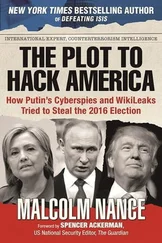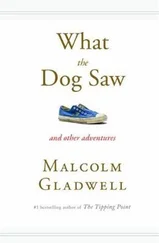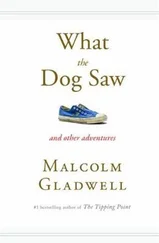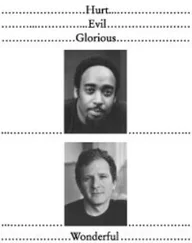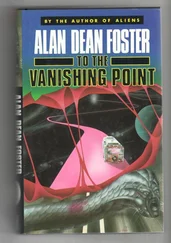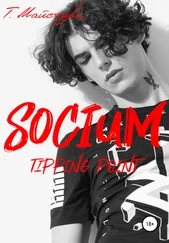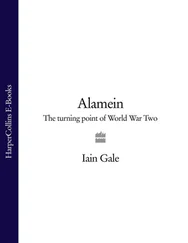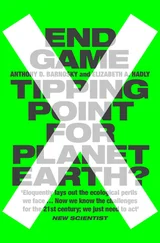Malcolm Gladwell - The Tipping Point
Здесь есть возможность читать онлайн «Malcolm Gladwell - The Tipping Point» весь текст электронной книги совершенно бесплатно (целиком полную версию без сокращений). В некоторых случаях можно слушать аудио, скачать через торрент в формате fb2 и присутствует краткое содержание. Город: Boston, New York, London, Год выпуска: 2000, ISBN: 2000, Издательство: LITTLE, BROWN AND COMPANY, Жанр: Культурология, Психология, на английском языке. Описание произведения, (предисловие) а так же отзывы посетителей доступны на портале библиотеки ЛибКат.
- Название:The Tipping Point
- Автор:
- Издательство:LITTLE, BROWN AND COMPANY
- Жанр:
- Год:2000
- Город:Boston, New York, London
- ISBN:0-316-31696-2
- Рейтинг книги:3 / 5. Голосов: 1
-
Избранное:Добавить в избранное
- Отзывы:
-
Ваша оценка:
- 60
- 1
- 2
- 3
- 4
- 5
The Tipping Point: краткое содержание, описание и аннотация
Предлагаем к чтению аннотацию, описание, краткое содержание или предисловие (зависит от того, что написал сам автор книги «The Tipping Point»). Если вы не нашли необходимую информацию о книге — напишите в комментариях, мы постараемся отыскать её.
The Tipping Point — читать онлайн бесплатно полную книгу (весь текст) целиком
Ниже представлен текст книги, разбитый по страницам. Система сохранения места последней прочитанной страницы, позволяет с удобством читать онлайн бесплатно книгу «The Tipping Point», без необходимости каждый раз заново искать на чём Вы остановились. Поставьте закладку, и сможете в любой момент перейти на страницу, на которой закончили чтение.
Интервал:
Закладка:
Most of us, I think, shy away from this kind of cultivation of acquaintances. We have our circle of friends, to whom we are devoted. Acquaintances we keep at arm's length. The reason we don't send birthday cards to people we don't really care a great deal about is that we don't want to feel obliged to have dinner with them or see a movie with them or visit them when they're sick. The purpose of making an acquaintance, for most of us, is to evaluate whether we want to turn that person into a friend; we don't feel we have the time or the energy to maintain meaningful contact with everyone. Horchow is quite different. The people he puts in his diary or on his computer are acquaintances — people he might run into only once a year or once every few years — and he doesn't shy away from the obligation that that connection requires. He has mastered what sociologists call the "weak tie," a friendly yet casual social connection. More than that, he's happy with the weak tie. After I met Horchow, I felt slightly frustrated. I wanted to know him better, but I wondered whether I would ever have the chance. I don't think he shared the same frustration with me. I think he's someone who set's value and pleasure in a casual meeting.
Why is Horchow so different from the rest of us? He doesn't know. He thinks it has something to do with being an only child whose father was often away. But that doesn't really explain it. Perhaps it is best to call the Connector impulse simply that — an impulse, just one of the many personality traits that distinguish one human being from another.
Connectors are important for more than simply the number of people they know. Their importance is also a function of the kinds of people they know. Perhaps the best way to understand this point is through the popular parlor game "Six Degrees of Kevin Bacon." The idea behind the game is to try to link any actor or actress, through the movies they've been in, to the actor Kevin Bacon in less than six steps. So, for example, O.J. Simpson was in Naked Gun with Priscilla Presley, who was in Ford Fairlane with Gilbert Gottfried, who was in Beverly Hills Cop II with Paul Reiser, who was in Diner with Kevin Bacon. That's four steps. Mary Pickford was in Screen Snapshots with Clark Gable, who was in Combat America with Tony Romano, who, thirty-five years later, was in Starting Over with Bacon. That's three steps. Recently, a computer scientist at the University of Virginia by the name of Brett Tjaden actually sat down and figured out what the average Bacon number is for the quarter million or so actors and actresses who have played in television films or major motion pictures and came up with 2.8312 steps. Anyone who has ever acted, in other words, can be linked to Bacon in an average of under three steps. That sounds impressive, except that Tjaden then went back and performed an even more heroic calculation, figuring out what the average degree of connectedness was for everyone who had ever acted in Hollywood. For example, how many steps on average does it take to link everyone in Hollywood to Robert DeNiro or Shirley Temple or Adam Sandler? Tjaden found that when he listed all Hollywood actors in order of their "connectedness," Bacon ranked only 669th. Martin Sheen, by contrast, can be connected to every other actor in 2.65681 steps, which puts him almost 650 places higher than Bacon. Elliot Gould can be connected even more quickly, in 2.63601. Among the top fifteen are people like Robert Mitchum and Gene Hackman and Donald Sutherland and Shelley Winters and Burgess Meredith. The best-connected actor of all time? Rod Steiger.
Why is Kevin Bacon so far behind these actors? One big factor is that Bacon is a lot younger than most of them and as a result has made fewer movies. But that explains only some of the difference. There are lots of people, for example, who have made lots of movies and aren't particularly well connected. John Wayne, for example, made an extraordinary 179 movies in his sixty-year career and still ranks only 116th, at 2.7173. The problem is that more than half of John Wayne's movies were Westerns, meaning that he made the same kind of movie with the same kind of actors over and over again.
But take someone like Steiger: he has made great movies like the Oscar-winning On the Waterfront and dreadful movies like Car Pool. He won an Oscar for his role in In the Heat of the Night and also made "B" movies so bad they went straight to video. He's played Mussolini, Napoleon, Pontius Pilate, and Al Capone. He's been in thirty-eight dramas, twelve crime pictures and comedies, eleven thrillers, eight action films, seven Westerns, six war movies, four documentaries, three horror flicks, two sci-fi films, and a musical, among others. Rod Steiger is the best-connected actor in history because he has managed to move up and down and back and forth among all the different worlds and subcultures and niches and levels that the acting profession has to offer.
This is what Connectors are like. They are the Rod Steigers of everyday life. They are people whom all of us can reach in only a few steps because, for one reason or another, they manage to occupy many different worlds and subcultures and niches. In Steiger's case, of course, his high connectedness is a function of his versatility as an actor and, in all likelihood, some degree of good luck. But in the case of Connectors, their ability to span many different worlds is a function of something intrinsic to their personality, some combination of curiosity, self-confidence, sociability, and energy.
I once met a classic Connector in Chicago by the name of Lois Weisberg. Weisberg serves as the Commissioner of Cultural Affairs for the City of Chicago. But that is only the latest in what has been an extraordinary string of experiences and careers. In the early 1950s, for example, Weisberg ran a drama troupe in Chicago. In 1956, she decided to stage a festival to mark the centenary of George Bernard Shaw's birth, and then began putting out a newspaper devoted to Shaw, which mutated into an underground, alternative weekly called The Paper . On Friday nights people from all over the city would gather there for editorial meetings. William Friedkin, who would go on to direct The French Connection and The Exorcist , was a regular, as was the attorney Elmer Gertz (who was one of Nathan Leopold's attorneys) and some of the editors from Playboy , which was just up the street. People like Art Farmer and Thelonius Monk and John Coltrane and Lenny Bruce would stop by when they were in town. (Bruce actually lived with Weisberg for a while. "My mother was hysterical about it, especially one day when she rang the doorbell and he answered in a bath towel," Weisberg says, "We had a window on the porch, and he didn't have a key, so the window was always left open for him. There were a lot of rooms in that house, and a lot of people stayed there and I didn't know they were there. I never could stand his jokes. I didn't really like his act. I couldn't stand all the words he was using.") After The Paper folded, Lois took a job doing public relations for an injury rehabilitation institute. From there, she went to work for a public interest law firm called BPI, and while at BPI she became obsessed with the fact that Chicago's parks were crumbling and neglected, so she gathered together a motley collection of nature lovers, historians, civic activists, and housewives and founded a lobbying group called Friends of the Parks. Then she became alarmed because a commuter railroad that ran along the south shore of Lake Michigan — from South Bend to Chicago — was about to shut down, so she gathered together a motley collection of railway enthusiasts, environmentalists, and commuters and founded South Shore Recreation, and saved the railroad. Then she became executive director of the Chicago Council of Lawyers, a progressive legal group. Then she ran a local congressman's campaign. Then she got the position of director of special events for the first black mayor of Chicago, Harold Washington. Then she quit government and opened a small stand in a flea market. Then she went to work for Mayor Richard Daley — where she is to this day — as Chicago's Commissioner of Cultural Affairs.
Читать дальшеИнтервал:
Закладка:
Похожие книги на «The Tipping Point»
Представляем Вашему вниманию похожие книги на «The Tipping Point» списком для выбора. Мы отобрали схожую по названию и смыслу литературу в надежде предоставить читателям больше вариантов отыскать новые, интересные, ещё непрочитанные произведения.
Обсуждение, отзывы о книге «The Tipping Point» и просто собственные мнения читателей. Оставьте ваши комментарии, напишите, что Вы думаете о произведении, его смысле или главных героях. Укажите что конкретно понравилось, а что нет, и почему Вы так считаете.

